Stahl, Darian Goldin  ORCID: https://orcid.org/0000-0002-8853-9902
(2021)
Book as Body: The Meaning-Making of Artists' Books in the Health Humanities.
PhD thesis, Concordia University.
ORCID: https://orcid.org/0000-0002-8853-9902
(2021)
Book as Body: The Meaning-Making of Artists' Books in the Health Humanities.
PhD thesis, Concordia University.
Preview |
Text (application/pdf)
32MBStahl_PhD_S2021.pdf - Accepted Version Available under License Spectrum Terms of Access. |
Video (Research-creation documentation) (video/mp4)
840MBStahl_PhD_S2021_video.mp4 - Supplemental Material Available under License Spectrum Terms of Access. Download preview: video/mp4 | |
![[thumbnail of Stahl_PhD_S2021_image1.jpg]](https://spectrum.library.concordia.ca/988230/8.hassmallThumbnailVersion/Stahl_PhD_S2021_image1.jpg) 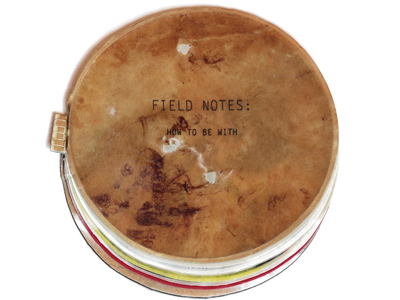 Preview |
Image (image/jpeg)
613kBStahl_PhD_S2021_image1.jpg - Supplemental Material Available under License Spectrum Terms of Access. |
![[thumbnail of Stahl_PhD_S2021_image2.jpg]](https://spectrum.library.concordia.ca/988230/9.hassmallThumbnailVersion/Stahl_PhD_S2021_image2.jpg) 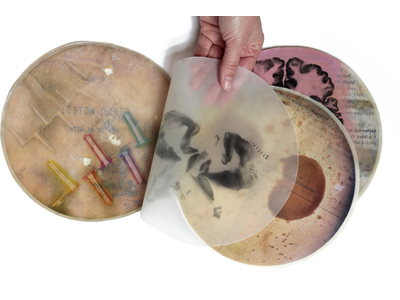 Preview |
Image (image/jpeg)
390kBStahl_PhD_S2021_image2.jpg - Supplemental Material Available under License Spectrum Terms of Access. |
![[thumbnail of Stahl_PhD_S2021_image3.jpg]](https://spectrum.library.concordia.ca/988230/10.hassmallThumbnailVersion/Stahl_PhD_S2021_image3.jpg) 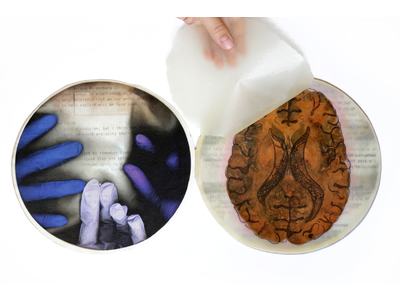 Preview |
Image (image/jpeg)
794kBStahl_PhD_S2021_image3.jpg - Supplemental Material Available under License Spectrum Terms of Access. |
![[thumbnail of Stahl_PhD_S2021_image4.jpg]](https://spectrum.library.concordia.ca/988230/11.hassmallThumbnailVersion/Stahl_PhD_S2021_image4.jpg) 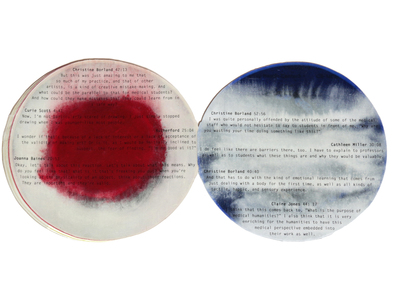 Preview |
Image (image/jpeg)
472kBStahl_PhD_S2021_image4.jpg - Supplemental Material Available under License Spectrum Terms of Access. |
![[thumbnail of Stahl_PhD_S2021_image5.jpg]](https://spectrum.library.concordia.ca/988230/12.hassmallThumbnailVersion/Stahl_PhD_S2021_image5.jpg) 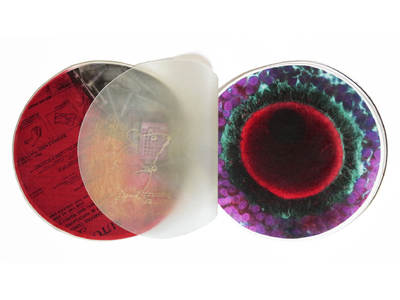 Preview |
Image (image/jpeg)
1MBStahl_PhD_S2021_image5.jpg - Supplemental Material Available under License Spectrum Terms of Access. |
![[thumbnail of Stahl_PhD_S2021_image6.jpg]](https://spectrum.library.concordia.ca/988230/13.hassmallThumbnailVersion/Stahl_PhD_S2021_image6.jpg) 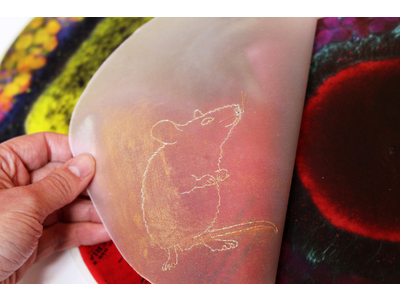 Preview |
Image (image/jpeg)
1MBStahl_PhD_S2021_image6.jpg - Supplemental Material Available under License Spectrum Terms of Access. |
![[thumbnail of Stahl_PhD_S2021_image7.jpg]](https://spectrum.library.concordia.ca/988230/14.hassmallThumbnailVersion/Stahl_PhD_S2021_image7.jpg) 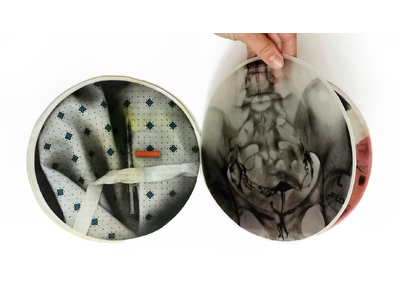 Preview |
Image (image/jpeg)
773kBStahl_PhD_S2021_image7.jpg - Supplemental Material Available under License Spectrum Terms of Access. |
![[thumbnail of Stahl_PhD_S2021_image8.jpg]](https://spectrum.library.concordia.ca/988230/15.hassmallThumbnailVersion/Stahl_PhD_S2021_image8.jpg) 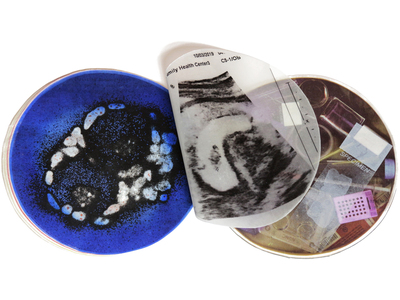 Preview |
Image (image/jpeg)
618kBStahl_PhD_S2021_image8.jpg - Supplemental Material Available under License Spectrum Terms of Access. |
![[thumbnail of Stahl_PhD_S2021_image9.jpg]](https://spectrum.library.concordia.ca/988230/16.hassmallThumbnailVersion/Stahl_PhD_S2021_image9.jpg) 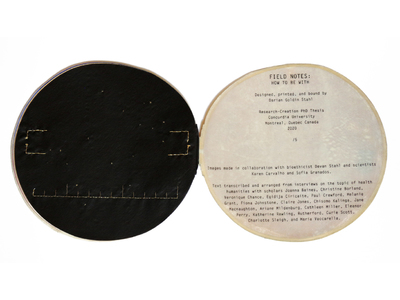 Preview |
Image (image/jpeg)
419kBStahl_PhD_S2021_image9.jpg - Supplemental Material Available under License Spectrum Terms of Access. |
![[thumbnail of Stahl_PhD_S2021_image10.jpg]](https://spectrum.library.concordia.ca/988230/17.hassmallThumbnailVersion/Stahl_PhD_S2021_image10.jpg) 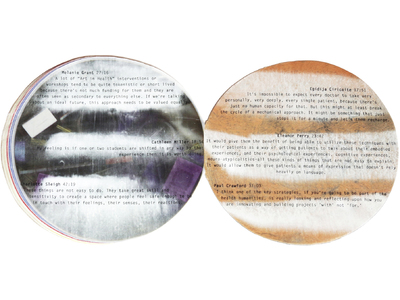 Preview |
Image (image/jpeg)
983kBStahl_PhD_S2021_image10.jpg - Supplemental Material Available under License Spectrum Terms of Access. |
![[thumbnail of Stahl_PhD_S2021_image11.jpg]](https://spectrum.library.concordia.ca/988230/18.hassmallThumbnailVersion/Stahl_PhD_S2021_image11.jpg) 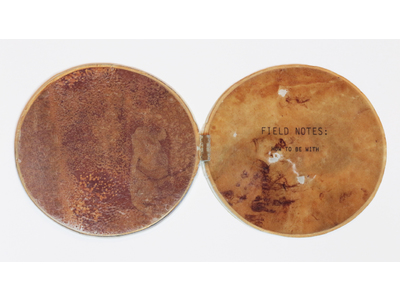 Preview |
Image (image/jpeg)
590kBStahl_PhD_S2021_image11.jpg - Supplemental Material Available under License Spectrum Terms of Access. |
Abstract
This research-creation dissertation investigates how artists’ books’ text, images, form, materiality, and other sensory engagements merge to communicate lived experiences of illness and disability. I ask how the meanings of these abstracted book-bodies adapt and change when they are re-interpreted by readers, and how this can be an effective strategy for forming relational understandings of what it is like to live with illness. Within the framework of a phenomenological practice, I show the generative potential for empathy and intercorporeal exchange that often occurs when engaging with another’s artist’s book. Next, I describe past practices of artists who have deployed artists’ books in negotiating the biomedicalization of their illness experience. I then reflect upon my own contribution to the intersection of artists’ books and healthcare, Field Notes: How to Be With. Finally, I analyze the outcomes of artist’s book workshops I developed and conducted with multiple communities, including biomedical personnel. These distinct, but inter-related research-creation practices indicate how patient communities can devise tacit and multi-sensory expressions of embodied phenomena that may otherwise be difficult to communicate through verbal means alone. From a health humanities perspective, the pedagogical potential of reading and making artists’ books may assist in resisting systemic pressures for clinical efficiency and unseat biases towards illness and disability. This research-creation dissertation thus serves as a philosophical, pedagogical, and pragmatic example of how to engage with artists’ books in health contexts. It examines how the formation of archival, hand-made book objects constitutes a legacy of lived experience that may be called upon, again and again, to share and understand life, death, illness, health, unease, and wellbeing.
| Divisions: | Concordia University > Faculty of Arts and Science > Humanities: Interdisciplinary Studies Concordia University > Research Units > Centre for Interdisciplinary Studies in Society and Culture Concordia University > Research Units > Hexagram - The Institute for Research/Creation in Media Arts and Technologies Concordia University > Research Units > Milieux Institute for Arts, Culture and Technology |
|---|---|
| Item Type: | Thesis (PhD) |
| Authors: | Stahl, Darian Goldin |
| Institution: | Concordia University |
| Degree Name: | Ph. D. |
| Program: | Humanities |
| Date: | 8 February 2021 |
| Thesis Supervisor(s): | Sawchuk, Kim |
| Keywords: | research-creation, health humanities, artists' books, printmaking, phenomenology, pedagogy |
| ID Code: | 988230 |
| Deposited By: | Darian Goldin Stahl |
| Deposited On: | 29 Jun 2021 22:28 |
| Last Modified: | 29 Jun 2021 22:28 |
| Related URLs: |
References:
Alexander, Charles. 1995. Talking the Boundless Book: Art, Language and the Book Arts. Minneapolis: Minnesota Center for Book Arts.Barnett, Richard. 2014. The Sick Rose. London: Thames and Hudson.
Baruch, Jay M., and Kelli Auerbach. 2012. "Beyond Comfort Zones: An Experiment in Medical and Art Education." Journal for Learning Through the Arts 8 (1): 1-14.
Bates, Victoria, Alan Bleakley Bleakley, and Sam Goodman. 2013. Medicine, Health and the Arts: Approaches to Medical Humanities. London: Routledge.
Bennett, Jane. 2010. Vibrant Matter: A political ecology of all things. Durham: Duke University Press.
Bishop, Jeff. 2008. “Rejecting Medical Humanism: Medical Humanities and the Metaphysics of Medicine.” The Journal of Medical Humanities 29: 15-25.
Blake, William. 1793. The Marriage of Heaven and Hell.
Bleakley, Alan. n.d. "Transitions in Health Humanities: Towards a "Critical" Health Humanities that Embraces Beauty." In In/sight 2: Engaging the Health Humanities, by Lianne McTavish and Pamela Brett MacLean. Edmonton: University of Alberta Press.
Bleakley, Alan. 2015. “When I say... The Medical Humanities in Medical Education.” Medical Education 49: 959-960.
Bolaki, Stella. 2020. "Contemporary Artists' Books and the Intimate Asthetics of Illness." Journal of Medical Humanities 21-39.
—. 2016. Illness as Many Narratives: Arts, Medicine, and Culture. Edinburgh: Edinburgh University Press.
Bolaki, Stella, and Egidija Ciricaite. 2017. Prescriptions: Artists' books on wellbeing and medicine. London: Natrix Natrix Press.
1829. Burke's Skin Pocket Book. Surgeons' Hall Museums, Edinburgh.
Carel, Havi. 2016. The Phenomenology of Illness. Oxford: Oxford University Press.
Carlin, Jane Anne. 2019. "Artists’ Books as Catalysts for Social Change ." Art Libraries Journal 44 (1): 2-8.
Cartwright, Lisa. 1995. Screening the Body: Tracing Medicine’s Visual Culture. Minneapolis: University of Minnesota Press.
Chance, Veronique. 2015. In the Absence of Running. University of Kent, Canterbury.
Chance, Veronique. 2020. "In the Absence of Running: From Injury and Medical Intervention to Art." Journal of Medical Humanities 41 (1): 65-80.
Chapman, Owen, and Kim Sawhuck. 2012. "Research-Creation: Intervention, Analysis and "Family Resemblances"." Canadian Journal of Communication 37 (1): 1-22.
Charon, Rita. 2001. “Narrative Medicine: A Model for Empathy, Reflection Profession, and Trust.” JAMA 286 (15): 1897-1902.
Ciricaite, Egidijia. 2020. " On Photographing Artist’s books." Journal of Medical Humanities 41: 81-83.
Classen, Constance. 2012. The Deepest Sense: A Cultural History of Touch. Chicago: University of Illinois Press.
—. 2017. The Museum of the Senses. London: Bloomsbury Academic.
Cole, Thomas, Nathan Carlin, and Ronald Carson. 2014. Medical Humanities: An Introduction. Cambridge: Cambridge University Press.
Connor, Steven. 2004. The Book of Skin . London: Reaction Books Ltd.
Costa, Beatriz de, and Kativa Philip. 1989. Tactical Biopolitics: Art, Activism, and Technoscience. Cambridge: MIT Press.
Couch, Amanda. 2016. Entrail Troyan. University of Kent, Canterbury.
Couch, Amanda. 2020. "Reflections on Digestions and Other Corporealities in Artists’ Books." Journal of Medical Humanities 41 (1): 7-19.
Crawford, Paul, Brian Brown, Charley Baker, Victoria Tischler, and Brian Abrams. 2015. Health Humanities. Hampshire: Palgrave Macmillin.
Drucker, Johanna. 2020. "Bound to Speak: Accounts of Illness in Artists’ Books." Journal of Medical Humanities 41 (1): 85-88.
—. 1995. The Century of Artists' Books. New York City: Granary Books.
Duff, Tagny. n.d. Cryobook Archives. Accessed November 4 2020. http://tagnyduff.com/projects-current/cryobook-archives/.
—. 2011. Cryobook Archives_Tagny Duff. February 7. Accessed December 2020. http://tagnyduff.com/projects-current/cryobook-archives/.
Duff, Tagny Duff. 2010-Present. Cryobook Archives . Montreal.
Ebenstein, Joanna. 2016. The Anatomical Venus. London: Thames and Hudson.
Eisner, Elliot W. 2018. "On the Differences Between Scientific and Artistic Approaches to Qualitative Research." Review of Research in Visual Arts Education 7 (1): 1-7.
Ferguson, Laura, and Katie Grogan. 2017. Art & Anatomy: Drawings. New York City: University of California Medical Humanities Press.
Finley, Susan. 2008. "Arts-Based Research." In Handbook of the Arts in Qualitative Research: Perspectives, Methodologies, Examples, and Issues, by J. Gary Knowles and Ardra L. Cole. Los Angeles: Sage Publications.
Foucault, Michel. 1976. The Birth of the Clinic. Translated by A.M. Sheridan. London: Routledge.
Frank, Arthur. 2018. "Rightness, Place, and Humanistic Health Care Ethics: Fragments of a Moral Inquiry." GeoHumanities 4: 310-315.
Fraser, Kimberly Diane, and Fatima al Sayah. 2011. “Arts-Based Methods in Health Research.” Arts & Health 3 (11): 110-145.
Garland-Thomson, Rosemarie. 2009. Staring: how we look. Oxford, New York: Oxford University Press.
Gilman, Sander. 1996. Seeing the Insane. Lincoln: University of Nebraska Press.
Grosz, Elizabeth. 1994. The Volatile Bodies: Toward Corporeal Feminism. Bloomington: Indiana University Press.
Hall, Martha, interview by Jennifer S. Tuttle. 2004. I Make Books Maine Women Writers Collection.
Hall, Martha. n.d. Prescriptions. Maine Women Writers Collection, Portland.
Hall, Martha. 2000. The Rest of My Life II. Maine Women Writers Collection.
Hall, Martha. 1999. Voices: Five Doctors Speak. University of Kent, Canterbury.
Hall, Martha, and Martin Antoinette. 2013. Holding In, Holding On: Artist’s Books by Martha A. Hall,. Northampton: Mortimer Rare Book Room, Smith College.
Hansen, Julie, and Suzanne Porter. 1999. The Physician's Art. Durham: Duke University Press.
Hasse, Cathrine. 2008. "Postphenomenology: Learning Cultural Perception in Science." Humanistic Studies 31: 43-61.
Highmore, N. 1651. Corporis humani disquisitio.
Hooker, Claire, and Estelle Noonan. 2011. “Medical Humanities as Expressive of Western Culture.” Medical Humanities 79-84.
Idhe, Don. 1977. Experimental Phenomenology . New York: Capricorn Books.
Idhe, Don. 2008. "Introduction: Postphenomenological Research." Human Studies 31: 1-9.
Jennings, M.L. 2009. “Medical Student Burnout: Interdisciplinary Exploration and Analysis.” Journal of Medical Humanities 30: 253–269.
Klima, Stefan. 1998. Artists Books: A Critical Survey of the Literature. New York City: Granary Book.
Kumagai, Arno K., Elizabeth K. Jones, and Anne L. Kittendorf. 2017. “Creative art and medical student development: a qualitative study.” Medical Education 51: 174-183.
Lammer, Christina. 2007. "Bodywork: Social somatic interventions in the operating theaters of invasive radiology." In Visual Interventions: Applied Visual Anthropology, by Sarah Pink. Oxford: Berghahn.
Leavy, Patricia. 2015. Method Meets Art: Arts-Based Research Practice . New York City: Guilford Press.
Leder, Drew. 1992. "Introduction: The Body in Medical Thought and Practice." Philosophy and Medicine 43: 1-12.
—. 1990. The Absent Body . Chicago: The University of Chicago.
—. 2016. The Distressed Body. Chicago: The University of Chicago Press.
Lin, Jenny. 2012. Skinny Leg. Montreal.
Louie, Patricia, and Rita Wilkes. 2018. "Representation of Race and Skin Tone in Medical Textbook Imagery." Social Science & Medicine 202: 38-42.
Loveless, Natalie. 2019. How to Make Art at the End of the World: A Manifesto for Research-Creation. Durham: Duke University Press.
Lyons, Joan. 1985. Artists’ Books: A Critical Anthology and Sourcebook. New York: Visual Studies Workshop Press.
Lyons, Joan. 1989. The Gynecologist. Rochester.
Macnaughton, Jane. 2011. "Medical Humanities Challenge to Medicine." Journal of Evaluation in Medical Practice 17 (5): 927-932.
Macnaughton, Jane, and Havi Carel. 2016. "Breathing and Breathlessness in Clinic and Culture: Using Critical Medical Humanities to Bridge an Epistemic Gap." In The Edinburgh Companion to the Medical Humanities, edited by Anne Whitehead and Angela Woods, 294-309. Edinburgh: Edinburgh University Press.
Manning, Erin. 2016. "Ten Propositions for Research-Creation." In Collaboration in Performance Practice, by Noyale Colin and Stefanie Sachsenmaier. London: Palgrave Macmillan.
n.d. Martha A. Hall Collection 1998-2003. University of New England. Accessed August 2020. https://library.une.edu/mwwc/collections/collections-a-z/martha-a-hall-collection-1998-2003/.
n.d. Martha A. Hall collection, 1971–2011 . University of New England. Accessed December 2020. https://library.une.edu/mwwc/collections/collections-a-z/martha-a-hall-collection-1998-2003/.
McNiff, Shaun. 2008. "Art-Based Research ." In in Handbook of the Arts in Qualitative Research: Perspectives, Methodologies, Examples, and Issues, by J. Gary Knowles and Ardra L. Cole. Los Angeles: Sage Publications.
Meli, Domenico Bertoloni. 2017. Visualizing Disease: The Art and History of Pathological Illustration. Chicago: The University of Chicago Press.
Merleau-Ponty, Maurice. 1969. The Essential Writings of Merleau-Ponty. Edited by Alden F. Fisher. New York: Harcourt, Brace & World.
—. 1968. The Visible and the Invisible. Evanston: Northwestern University Press.
O’Connor, Emma. 2015. S:ST298.402. University of Kent, Canterbury.
Petherbridge, Deanna, and Ludmilla Jordanova. 1997. The Quick and the Dead: Artists and Anatomy. Manchester: Cornerhouse Publications.
Phillips, Michael. 2018. "Printing in the Infernal Method: William Blake's Method of "Illuminated Printing"." Interfaces 39: 67-89.
Pink, Sarah. 2015. Doing Sensory Ethnography. 2nd Edition. Los Angeles: Sage Publishing Ltd.
Radstake, Maud. 2007. Visions of Illness: An Endography of Real-Time Medical Imaging. Utrecht: Eburon Delft.
Remmelin, Johann. 1619. Catoptrum Microcosmicum. Ausburg.
Rouncefield, Mary. 2013. Mr. Darcy’s Advice the Hip Patient. University of Kent, Canterbury.
Rutherford, Emer Ford, Jacqueline Priego-Hernandez, Aurelia Butcher, and Clare Wedderburn. 2018. "Using photography to enhance GP trainees’ reflective practice and professional development." Journal of Medical Humanities 44 (3): 158-164.
Scarry, Elaine. 1985. The Body in Pain: The Making and Unmaking of the World. Oxford: Oxford University Press.
Schmidt, Erin. n.d. The Unfinished Blanket. Accessed June 12, 2020. https://www.erinkschmidt.com/theunfinishedblanket.html.
Schmidt, Erin. 2016. The Unfinished Blanket. University of Kent, Canterbury.
Shapiro, Johanna. 2009. “Medical Humanities and their Discontents: Definitions, Critiques, and Implications.” Academic Medicine 84 (2): 192-198.
Sleigh, Charlotte, and Sarah Craske. 2017. Nine-Tenths of the Iceberg: Research as the Unseen Component of Artists’ Work. November. Accessed January 2021. https://www.interaliamag.org/articles/sarah-craske-charlotte-sleigh-nine-tenths-iceberg-research-unseen-component-artists-work/.
Springgay, Stephanie, Anise Truman, and Sara MacLean. 2019. "Socially Engaged Art, Experimental Pedagogies, and Anarchiving as Research-Creation." Qualitative Inquiry 5 (1): 1-11.
Squier, Susan Merrill. 2007. "Beyond Nescience: The intersectional Insights of Health Humanities." Perspectives in Biology and Medicine 50 (3): 334-347.
Stacey, Jackie. 1997. Teratologies. London: Routledge.
Stafford, Barbara Maria. 2007. Echo Objects: The Cognitive Work of Images. Chicago: The University of Chicago Press.
Stahl, Darian Goldin. 2019. "Field Notes: How to be Generative." Synapsis: A Health Humanities Journal. July 7. Accessed April 7, 2021. https://medicalhealthhumanities.com/2019/07/07/synapsis-in-paris-field-notes-how-to-be-generative/.
—. 2019. Field Notes: How to Be Generative. July 7. Accessed January 2021. https://medicalhealthhumanities.com/2019/07/07/synapsis-in-paris-field-notes-how-to-be-generative/.
Stahl, Darian Goldin. 2020. Field Notes: How to Be With. Montreal.
Stahl, Darian Goldin. 2014. The Importance of Dualism. Wellcome Collection, London.
Stahl, Devan. 2018. Imaging and Imagining Illness: Becoming Whole in a Broken Body. Eugene: Cascade Press.
Tarlow, Sarah. 2018. "Curious Afterlives: The Enduring Appeal of the Criminal Corpse." 21: 210-228.
Tarlow, Sarah, and Emma Battell Lowman. 2018. Harnessing the Power of the Criminal Corpse. London: Palgrave Macmillan.
Toombs, S. Kay. 1988. "Illness and the Paradigm of the Lived Body." Theoretical Medicine 9: 201-226.
Toombs, S. Kay. 1992. The Body in Multiple Sclerosis. Vol. 43, in The Body in Medical Thoughtand Practice , by Drew Leder, 127-137. London: Kluwer Academic Publishers.
Toombs, S. Kay. 1987. “The Meaing of Illness: Phenomenological Approach to the patient-physician relationship.” Journal of Medicine and Philosophy 12: 219-240.
Toombs, S. Kay. 1990. "The Temporality of Illness." Theoretical Medicine 227-241.
Tuttle, Jennifer S., and Cathleen Miller. 2020. "Unruly Voices: Artists’ Books and Humanities Archives in Health Professions Education." Journal of Medical Humanities 41: 53-64.
Vaughan, Kathleen. 2005. "Pieced Together: Collage as an artist’s method for interdisciplinary research." International Journal of Qualitative Methods 4 (1): 27-52.
Verbeek, Caro, and Cretien van Campen. 2013. "Inhaling Memories: Smell and Taste Memories in Art, Science, and Practice." Senses and Society 8 (2): 133-148.
Verbeek, Peter-Paul. 2008. "Obstetric Ultrasound and the Technological Mediation of Morality: A Postphenomenological Analysis." Human Studies (31): 11–26.
Vesalius, Andreas. 1540. De humani corpo ris fabrica epitome.
Washington, Harriet A. 2006. Medical Apartheid: The Dark History of Medical Experimentation on Black Americans from Colonial Times to the Present. New York: Harlem Moon Broadway Books.
Weiss, Gail. 2004. Intertwinings. Albany: State University Press of New York.
Whitehead, Anne, and Angela Woods. 2016. The Edinburgh Companion to the Medical Humanities. Edinburgh: Edinburgh University Press.
Wijdicks, Eelco. 2020. "The Galling and Gifted Franz Joseph Gall." The Lancet: Neurology 19 (10): 812-813.
Woods, Angela. 2011. “The Limits of Narrative: Provocations for the Medical Humanities.” Medical Humanities 37 (2): 73-78.
Young, Iris. 1994. "Comments on Seyla Benhabib, Situating the Seld." New German Critique 62: 165-172.
Repository Staff Only: item control page


 Download Statistics
Download Statistics Download Statistics
Download Statistics